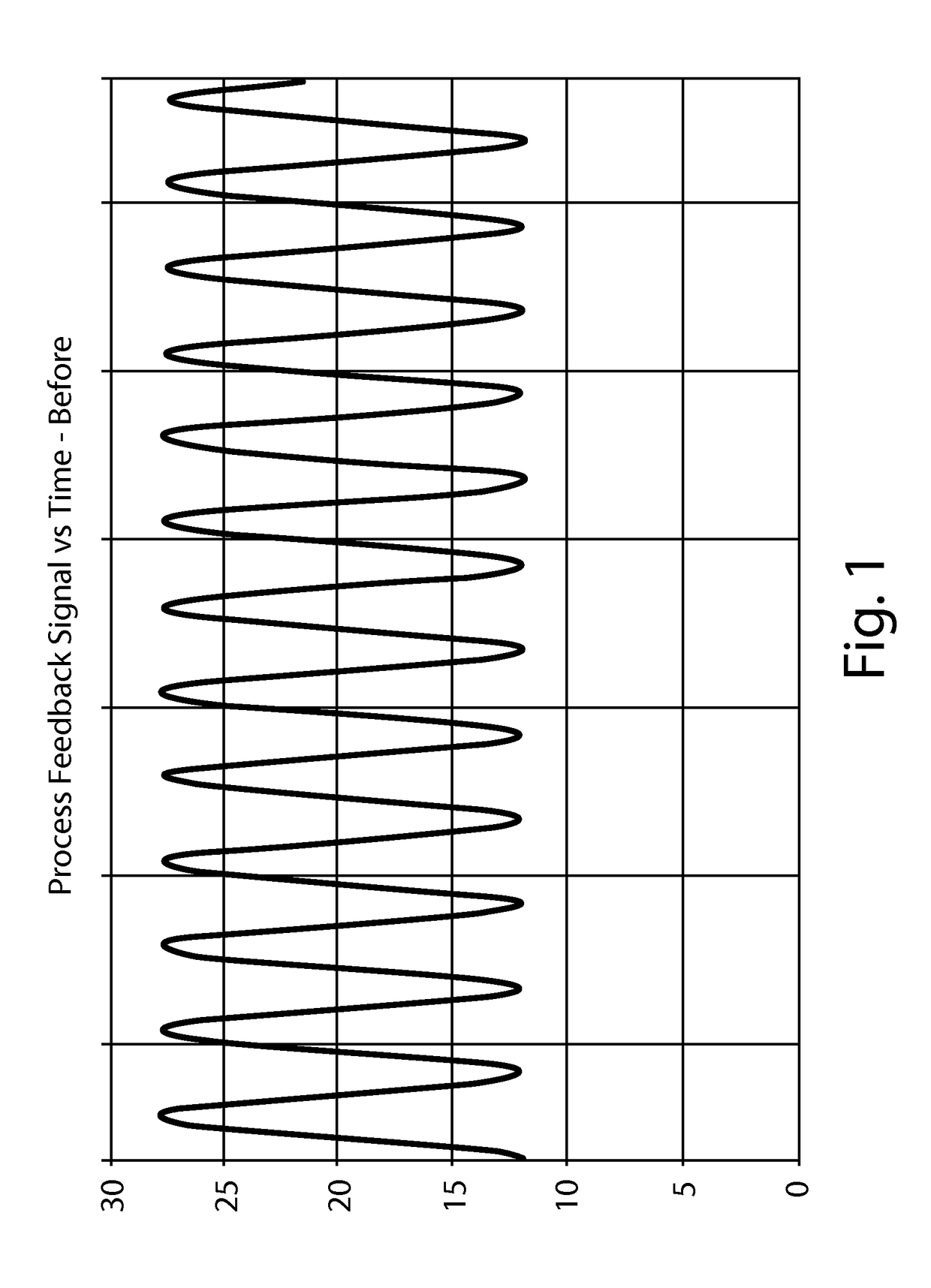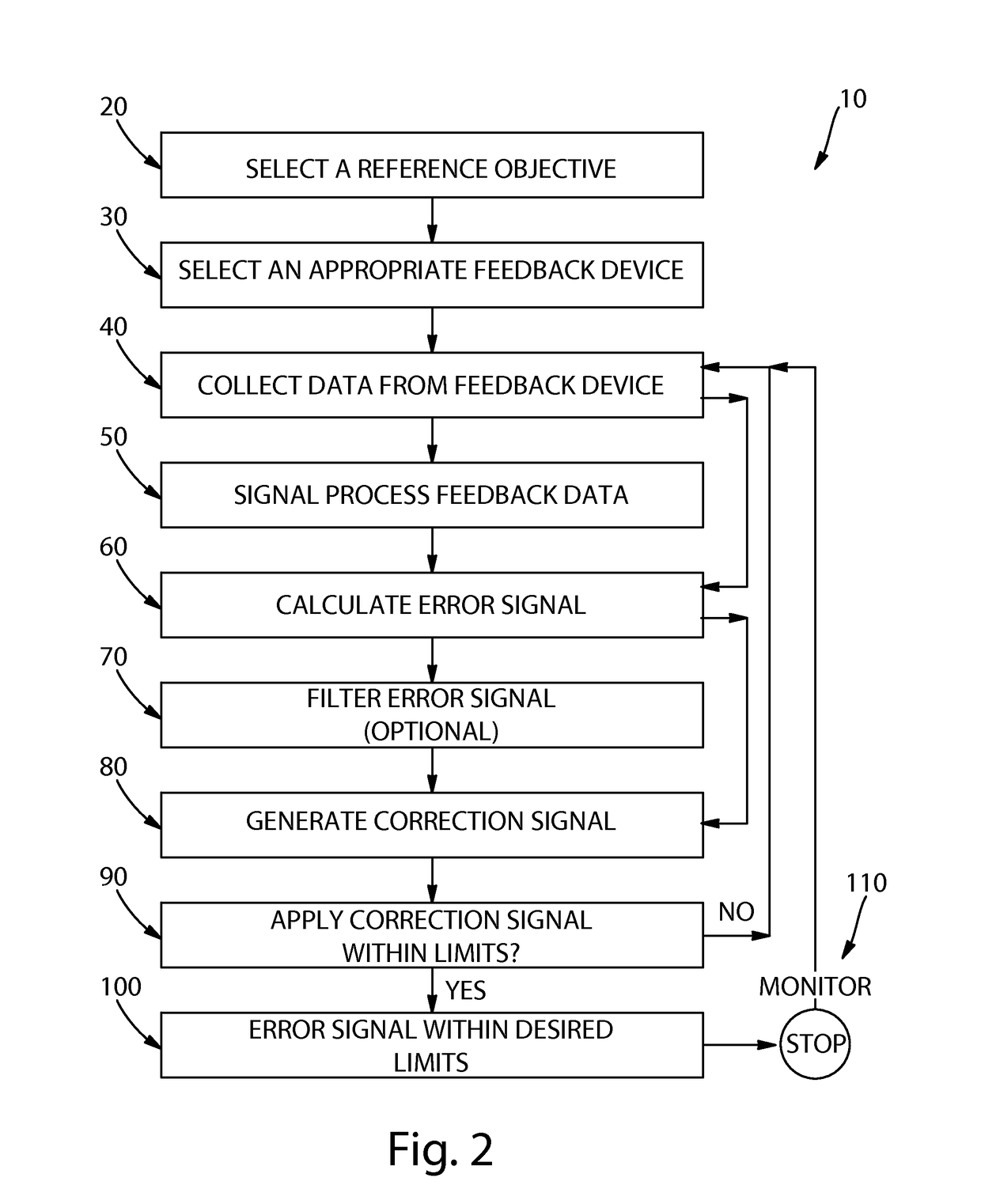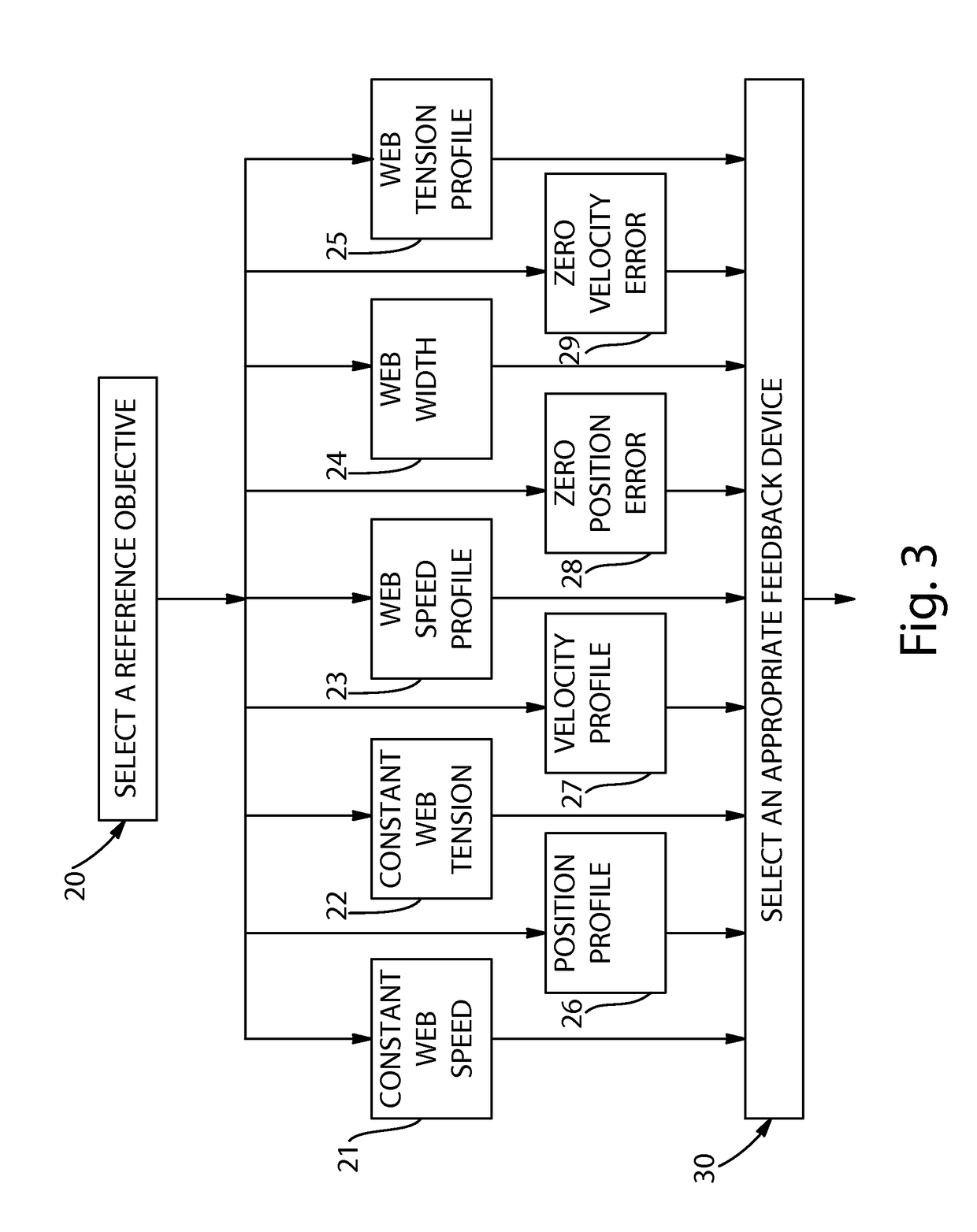Method for reducing the effects of parent roll variations during unwinding
a technology of parent roll and feed rate variation, which is applied in the field of web tension and feed rate variations, can solve the problems of unaccounted for process disturbances, significant problems, and considered problems in typical tension control systems, and achieves the effects of reducing feed rate variations in web material, enhancing reliability, and reducing manufacturing costs
- Summary
- Abstract
- Description
- Claims
- Application Information
AI Technical Summary
Benefits of technology
Problems solved by technology
Method used
Image
Examples
Embodiment Construction
[0021]In the manufacture of web material products including paper products such as paper towels, bath tissue, facial tissue, and the like, the web material which is to be converted into such products is initially manufactured and convolutely wound into large parent rolls and placed on unwind stands. The embodiments described in detail below provide exemplary, non-limiting examples of methods for reducing the effects of process disturbances such as feed-rate, web velocity, and / or tension in a web material due to variations in the parent roll when unwinding the parent roll for use in a downstream converting operation. In particular, the embodiments described below provide exemplary, non-limiting methods which take into account any out-of-round variations (or characteristics) of the parent roll and make appropriate adjustments to reduce web feed rate, web velocity, and / or tension variations.
[0022]By way of example only, an unwind profile of an out-of-round parent roll may have an exemp...
PUM
 Login to View More
Login to View More Abstract
Description
Claims
Application Information
 Login to View More
Login to View More - R&D
- Intellectual Property
- Life Sciences
- Materials
- Tech Scout
- Unparalleled Data Quality
- Higher Quality Content
- 60% Fewer Hallucinations
Browse by: Latest US Patents, China's latest patents, Technical Efficacy Thesaurus, Application Domain, Technology Topic, Popular Technical Reports.
© 2025 PatSnap. All rights reserved.Legal|Privacy policy|Modern Slavery Act Transparency Statement|Sitemap|About US| Contact US: help@patsnap.com



